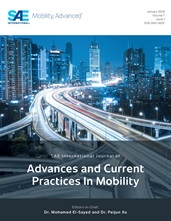To date, no generally valid statements can be made about the service life of brake pads, which may be due to factors such as driving style, the friction material used or the varying vehicle weight. While dynamic friction models including friction history are already established [1], the investigation of wear and wear dust behavior is currently in the focus of many research projects. One example is the investigation of calculation models for brake pad wear while neglecting the temperature development in the brake [2].
In cars, temperatures of up to 800°C occur in the brake under high loads, which leads to a significant increase in wear. Accordingly, the question arises how an estimation of brake pad wear can be applied to highly dynamic load cases. To do this, however, the processes taking place in the boundary layer between pad and disc must first be comprehensively understood and described. For this purpose, high-precision measurement technology is necessary, which was developed and optimized over several years at the Institute of Dynamics and Vibrations (IDS) in the form of the Automated Universal Tribotester (AUT).
In cooperation with Volkswagen AG, several test procedures have therefore been developed for the AUT, which provide information about the factors influencing the wear of brake pads under non-stationary conditions. For example, a previously developed stationary test procedure is carried out with four different temperature levels, which demonstrates a different temperature sensitivity depending on the pad material. In addition, decreasing velocity profiles with equivalent idle work to the stationary test procedure have been investigated in order to be able to analyze the influence of the dynamics of braking on wear more precisely. Depending on the friction pairing used, both the tendency and the absolute generated wear show differences with respect to the stationary reference measurement. The obtained results therefore represent a starting point for the better understanding of the influencing factors on brake pad wear.
